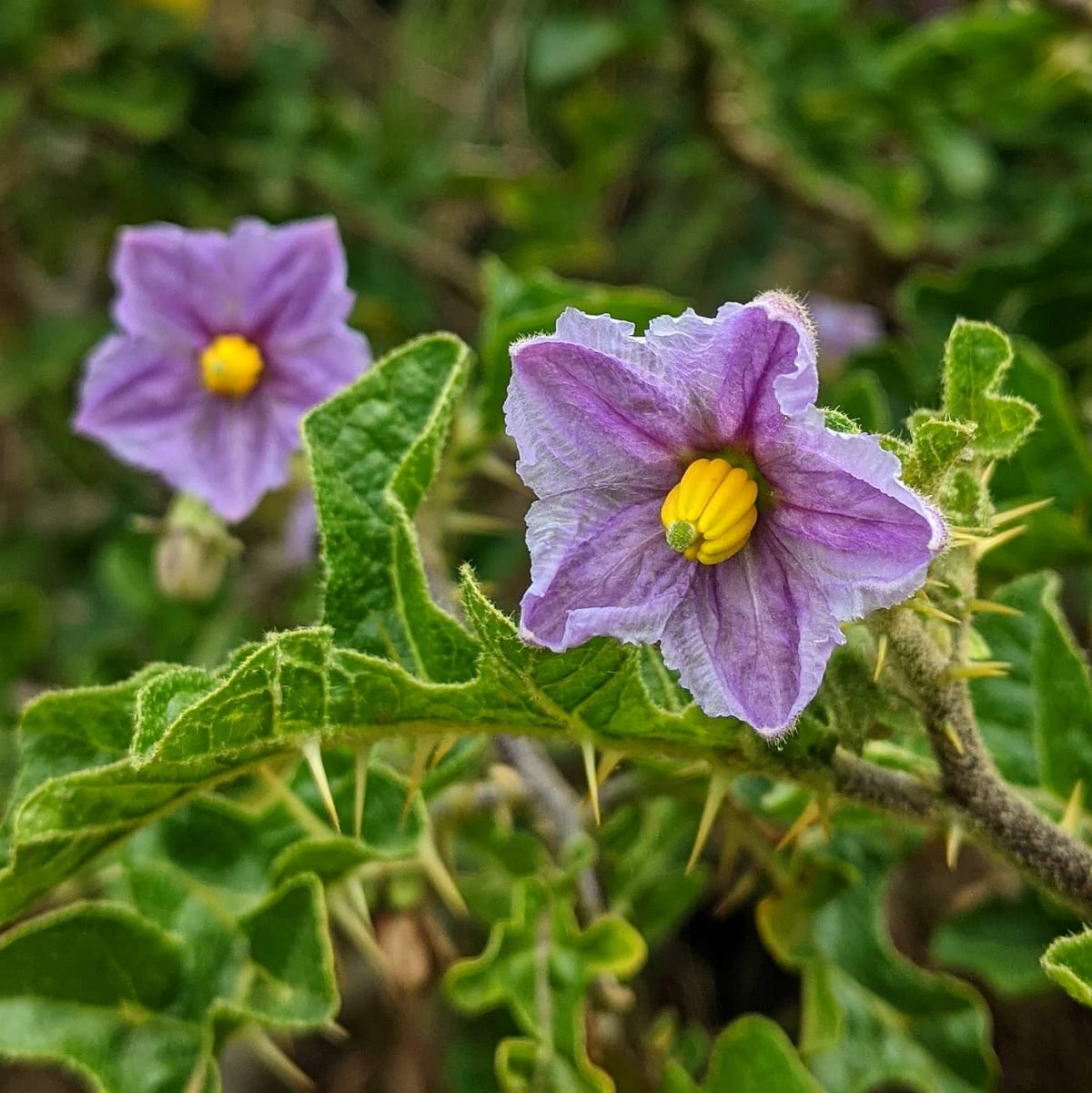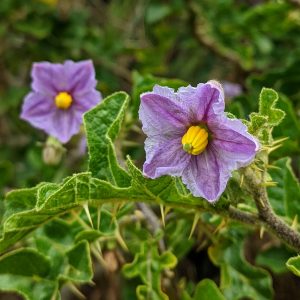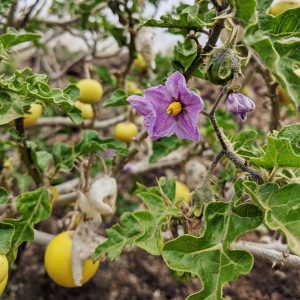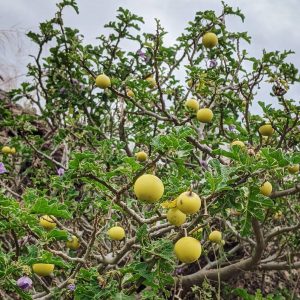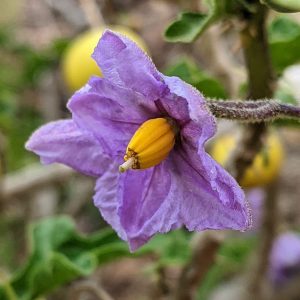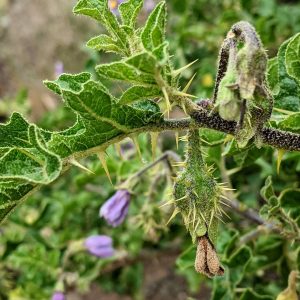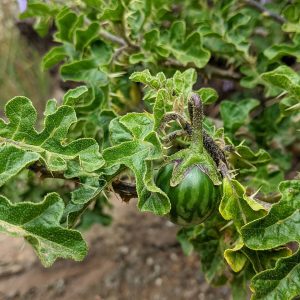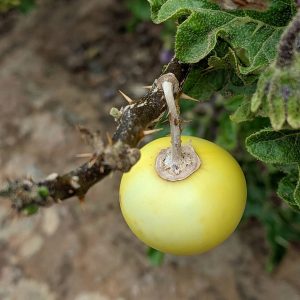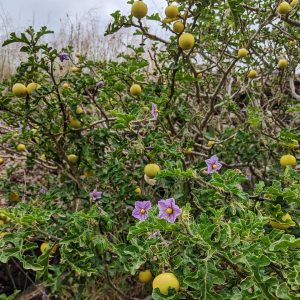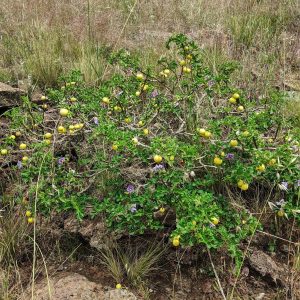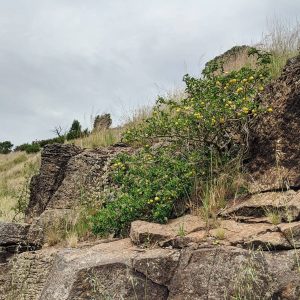Devil’s Apple (Solanum linnaeanum), a nightshade from Southern Africa adopted into ornamental use on the strength of its radiant, toxic fruit.
Traditionally called Apple of Sodom, this was apparently a confusion with Calotropis procera, a Western Asian dogbane with fruit that actually matches the Old Testament narrative, in that that fruit dissolves into ‘smoke and ashes’ (ie. fluffy seeds) when opened.
Recorded by Loudon as introduced to England in 1688 for conservatory use, Devil’s Apple (look at those prickles!) is also found throughout the Mediterranean, and that northern population’s origins as a pre-historic (pre-Sahara?) disjuncture or a human introduction remains uncertain.
Improbably, this species was collected by Robert Brown at Sidney in 1802. And yes, that’s no typo. Brown’s 1810 manuscript, the first formal survey of Australian botany, is noxiously written entirely in Latin (accounting for its poor sales, which led Brown to abandon the project uncompleted). But we’ll give him a minor credit for recognising that this nightshade was ‘probably introduced’. By whom is not known; accidental introductions in contaminated seed or ships’ ballast have been suggested, although an intentional planting to ornament someone’s fancy Sydney garden can’t be ruled out though the species doesn’t seem to have ever been widely sold here.
In Victoria, Devil’s Apple was recorded on the Plenty River in 1852, and at Brighton in 1871. Outside of Victoria, the species was listed as a local weed in an 1873 Brisbane Courier column, whose author considered it to have ‘run out of gardens’, and the QLD government botanist F.M. Bailey reported it was widespread in the colony’s south-east, and implied that population had originated with the NSW introduction. It had also shown up in South Australia by 1880, and was proclaimed there by 1896.
The photographed plants are established in small numbers on rocky outcrops in damaged grassland above Jackson’s Creek in the Organ Pipes National Park, on the edge of Keilor North.
View Original Post on Instagram
Search for information about Solanum linnaeanum in the Flora of Victoria
View information and occurrences of Solanum linnaeanum on the Atlas of Living Australia
